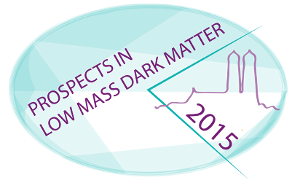Speaker
Dr
Paolo Beltrame
(University of Edinburgh - School of Physics and Astronomy)
Description
The Large Underground Xenon (LUX) experiment is a 350kg liquid xenon time projection chamber (TPC) designed to directly detect galactic dark matter, in particular as Weakly Interactive Massive Particle (WIMP). Currently deployed 1 mile underground in the Sanford Underground Research Facility in Lead, South Dakota, LUX completed its first physics run in 2013 collecting 85.3 live-days of science data. The profile-likelihood based analysis has shown no evidence for signal, setting the best limit on spin independent WIMP-nucleon cross section with a minimum of 7.6 × 10−46 cm2 for WIMP mass of 33 GeV/c2 at 90% C.L. LUX is presently conducting a 300-day data taking. The LUX-ZEPLIN (LZ), the successor of LUX, is a second-generation dark matter detector also based on TPC technology, with total liquid xenon mass of about 10 tonnes.
The detectors are optimised for discovering WIMP in the mass range from few GeV/c2 to
hundreds of TeV/c2 . However new techniques for nuclear recoil (NR) and electron recoil
(ER) calibration enhance the potentiality also for light WIMP and axion searches. Multiple scattering of mono-energetic 2.45 MeV neutrons are used for NR, allowing precision calibration of liquid xenon at energies down to 1.2 keV for light yield and 0.8 keV for charge yield, and various diffused sources are employed for ER, enabling to reach down to 190 eV. We will present these techniques along with the analysis specifically dedicated to light dark matter searches based on identifying charge only events.
We will also present the design of the LZ technical systems, the instrument expected backgrounds and science performance. In addition to the ionisation only analysis the combined exploitation of the TPC together with the outer detector systems, and the novel development of software tools, will broaden the LZ sensitivity to more exotic dark matter scenarios.
Primary author
Dr
Paolo Beltrame
(University of Edinburgh - School of Physics and Astronomy)

